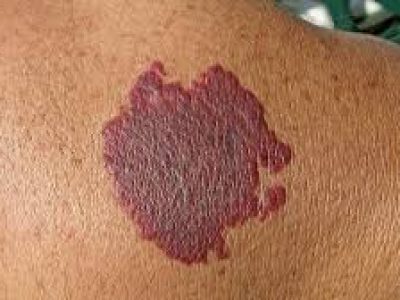port-wine stains / haemangiomas
port-wine stains / haemangiomas
A nevus flammeus (port-wine stain, blood sponge) is a congenital dilation of blood vessels in the skin. It is a rare malformation of the fine blood vessels of the skin (capillaries), which appear as a light to blue-red spot. Port-wine stains appear in approximately two out of every 100 newborns, with girls being affected slightly more frequently. They are not painful and do not increase in size. Port-wine stains merely expand as the body grows .

Symptoms for port-wine stains
A port-wine stain is caused by several small superficial blood vessels in the skin. The affected vessels are permanently dilated.
This becomes visible as an irregularly shaped, sharply defined red spot. The size of the spot varies from a few millimeters to several centimeters in infants. In extreme cases, a port-wine stain may extend over two or more areas of the body.
Affected areas for port-wine stains/blood sponges
The face, neck and sacral region are particularly affected. Less commonly, a port-wine stain occurs on an arm or leg. In most cases, the redness of the skin is limited to one side of the body
Port-wine stains can be removed with the help of laser treatments. Port-wine stains are congenital skin lesions caused by excessive collections of blood vessels in the skin. Laser treatments can target and destroy the blood vessels in port-wine stains without damaging the surrounding tissue. Depending on the type and size of the port-wine stain, several sessions may be required. However, it is important to consult an experienced and qualified professional to minimize potential risks and side effects.
